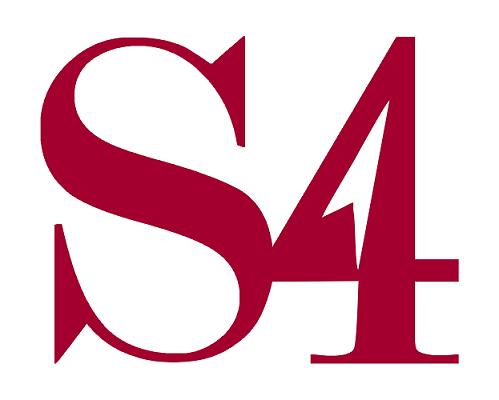Contribute
| Telugu Language And Literature |
Rama B. Nouduri
01/21/2009
Dr. G.V.R. K. Sharma of Harvard Medical School presented the lecture on
“Telugu Language and Literature†in the Harvard University Outreach series
on Saturday, January 10, 2009, at Harvard University Science Center in Cambridge. The lecture was the fourteenth lecture in the series entitled “Indian Languages and Literature†that commenced in 2006. It was an informative lecture presenting a complete survey of Telugu language and with the analysis of the evolution of Telugu literature. Readings of excerpts from literature and recitations made the lecture interesting. There was good participation from the audience. The lecture was hosted by Dr. Bijoy Misra of Harvard University.
Telugu (also called 'Andhra Bhaasha') is one of the classical languages of India, an Indo-Dravidian off-shoot which attained its present form at least a thousand years ago. Ranked seventh in Asia and fourteenth in the world in its usage, it is spoken by about eighty million people, primarily in the state of Andhra Pradesh in India and sizable diaspora populations abroad. The language is composed of approximately sixty percent Tatsama and Tadbhava words with origin in Sanskrit. Most of the words characteristically end in vowels, 'Ajanta', hence the label 'Italian of the East'.
Telugu is closely related to Kannada language, both in script and in literary evolution. The grammar is precise and the prosody consists of meters both in Sanskritic (Margi), and colloquial (Desi) style. Nannaya (11th century A.D) was the first poet (Adi Kavi), who rendered Vyasa's Mahabharata (first 2+ canto's) into Telugu in the 'Champu' format (a mixture of poetry and prose) and set the trend for others. Noteworthy among them were Thikkana who completed the remaining sections of Mahabharata, Nannechoda, Yerrapreggada, Nachana Somana, Srinadha and Pothana.
'The Golden age' of Telugu literature was during the reign of Krishnadevaraya (16th century), a great poet and scholar himself, in whose court were illustrious names like Allasani Peddana, Pingali Surana, Thimmana, Dhoorjati, Tenali Ramakrishna and Bhattu Moorthi. With the fall of the Vijayanagara empire, the patronage shifted to Tanjavur (Nayakas), but the literary quality declined. Vemana of the 18th century stands out as a rebel against the social, religious and literary orthodoxy. The modern age dawned with Gurajada Apparao and Gidugu Ramamurthy (19th century), the advocates of spoken (Vyavaharika) Telugu (as opposed to the traditional (Sampradayika) form, which had been the only literary norm.
Complete break from the past happened with the advent of Sri Sree (Srirangam Sreenivasarao), hailed as the harbinger of modern Telugu era (navayugavaitalika). Although the great Viswanadha Satyanarayana remained a staunch traditionalist, others like Devulapalli Krishna Sastry, and Tilak accepted both traditions. Most modern Telugu writers employ the spoken words in blank or free verse in place of the traditional in rigid prosody, and address a wide range of issues, particularly, feminist and dalit, which have been long neglected. Telugu prose, which was limited to the champu format, found full expression in the modern era with novels, short stories and essays authored by the likes of Chalam, Kutumba Rao, Cha.So (Chaganti Somayajulu) and Rachakonda Viswanadha (Ra.Vi) Sastry.
Among the special features that characterize Telugu are Avadhanam and Sataka Sahitya. Avadhanam is a unique public display of spontaneous versification dealing with eight (Ashta), a hundred (Sata) or a thousand (Sahasra) questioners (pricchaka) simultaneously. This literary feat, although known in Sanskrit, was popularized by the duo, Tirupati-Venkata Kavulu; there are many current Telugu avadhanis who have mastered this technique. Telugu literature abounds in Sataka sahitya. Famous among them are: Sumati, Dasaradhi, Kalahastiswara and Vemana. In the lecture, Mr Rama Bhaskar Nouduri recited a few well-known poems from Narasimha Sataka.
Of no less importance is the contribution of Telugu language to Karnatik (South Indian classical) music. Many Kirtanas, Varnams, Padams, Javalis and Thillanas are composed in mellifluous Telugu. Dr Narasingarao Eswara illustrated the musical aspects briefly with examples from Annamaya and Thyagaraja.
At the end of the talk Dr Sharma answered questions from the audience dealing with the origin of the words 'Telugu' and 'Andhra', the motivation for good literature in historical times, secular trends in Telugu poetry and the future of Telugu with the onslaught of globalization. Dr. Misra thanked the speaker and the audience with applause.
You may also access this article through our web-site http://www.lokvani.com/
